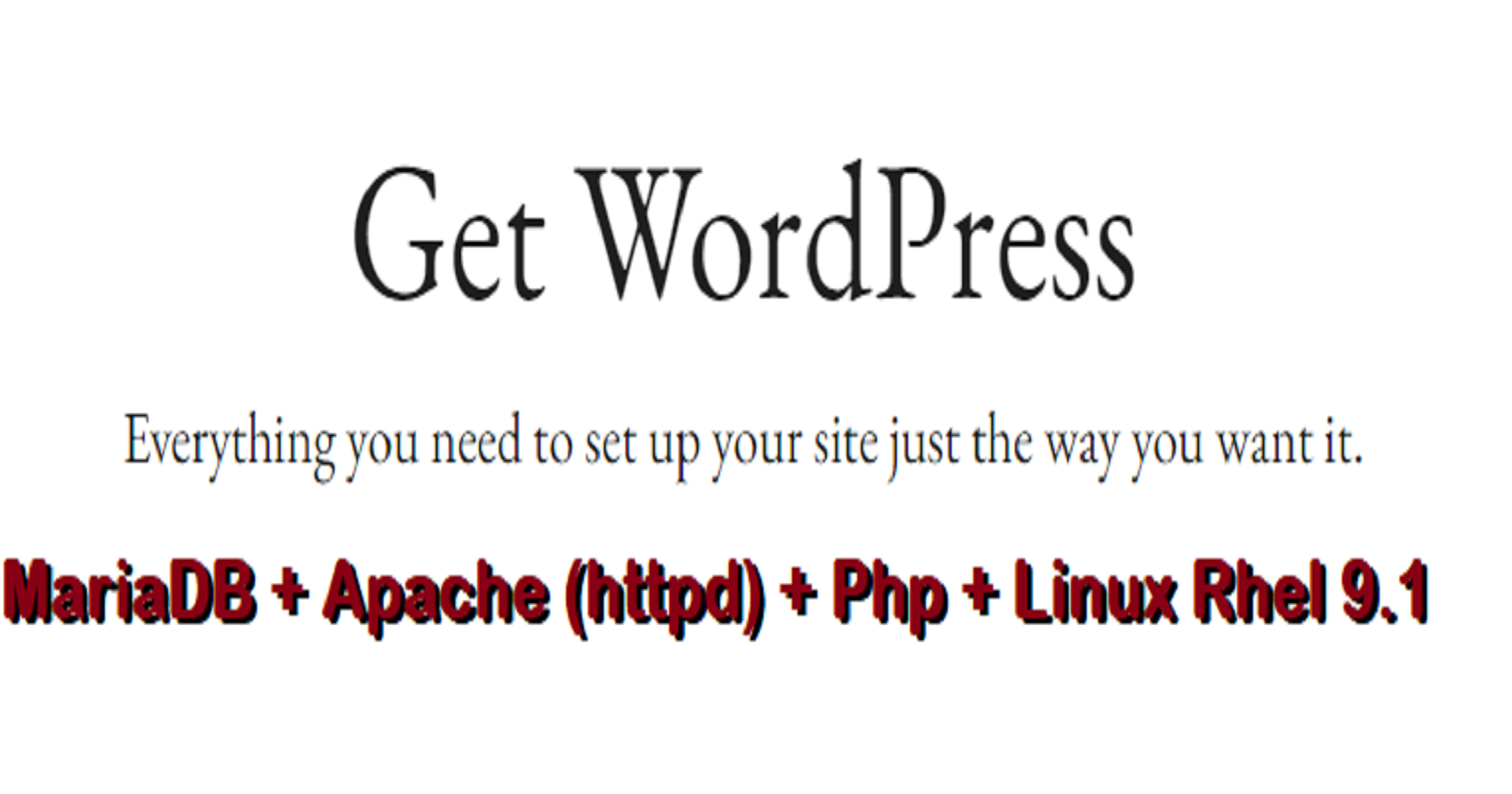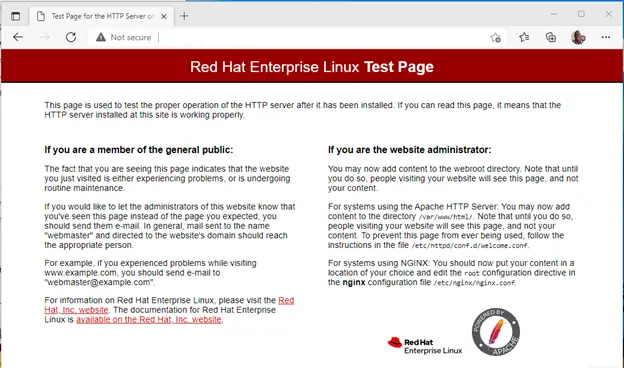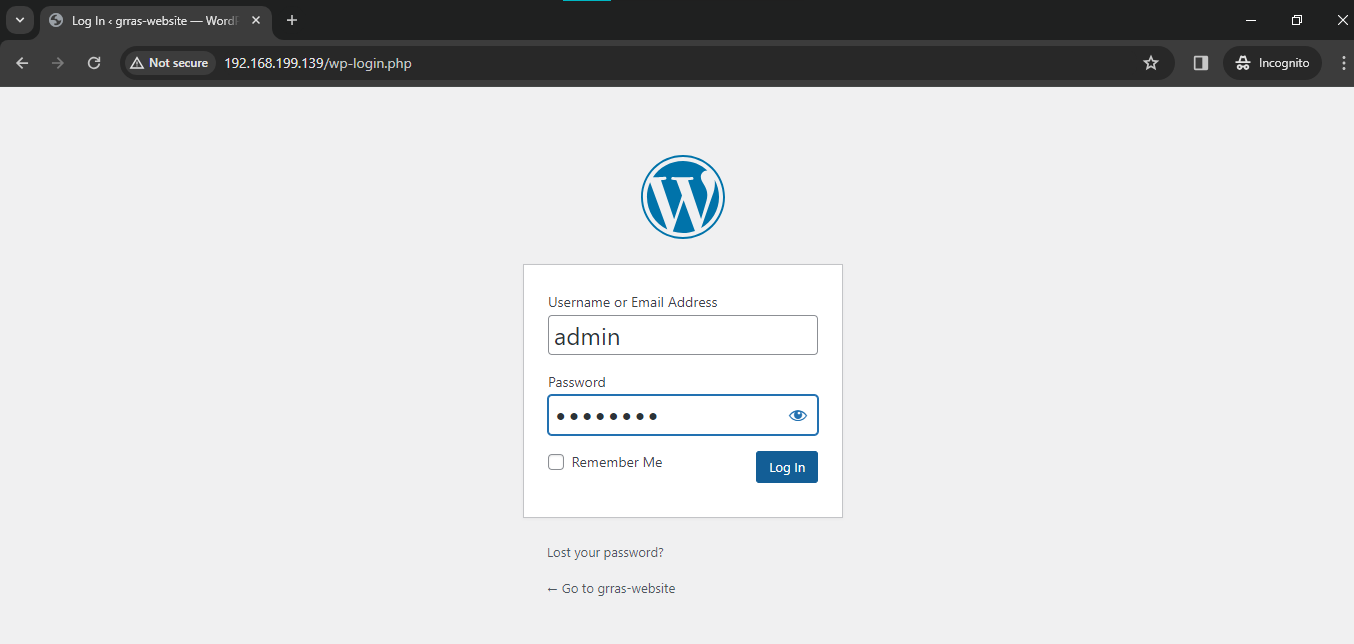Deploy WordPress + MariaDB + PHP + Apache web server on rhel9 with easy steps
 Rakesh Kumar Jangid
Rakesh Kumar Jangid3 min read

Pre-Setup:
I am assuming that you have
Configured the yum client and EPEL repository on the machine.
Hostname
Proper Network Internet connection for package installation
Install Apache Web Server
- httpd packages for the web-server
# yum install -y httpd
- Restart the
httpd.serviceand enable it
# systemctl enable --now httpd
- Add http & https package in the firewall & reload the firewall service
# firewall-cmd --permanent --add-port=80/tcp
# firewall-cmd --permannet --add-port=443/tcp
# firewall-cmd --reload
# firewall-cmd --list-all
- check the selinux label
object_r:httpd_sys_content_ton/var/www/html/
# ls -lZ /var/www/html
-rw-r--r--. 1 root root unconfined_u:object_r:httpd_sys_content_t:s0 405 Feb 6 2020 index.html
- Check the HTTP web server page on the browser

Congratulations!
your apache web server is working perfectly. Let's Move further for MySQL + WordPress configuration.
Install MariaDB/MySQL and WordPress
- For this first, we have to set setup the
"REMI"repository client on the yum repository forPHPpackages.
💡
Check your OS version
/etc/os-release before configuring the REMI repository.# cat /etc/os-release
[root@mh1 conf]# cat /etc/os-release
NAME="Red Hat Enterprise Linux"
VERSION="9.1 (Plow)"
REDHAT_SUPPORT_PRODUCT_VERSION="9.1"
- Setup REMI repository for RHEL 9.1
# dnf install https://repo.extreme-ix.org/remi/enterprise/remi-release-9.rpm
# yum repolist all
- Install PHP packages
(php, php-mysqlnd, php-pdo, php-gd, php-mbstring)
# yum install php php-mysqlnd php-pdo php-gd php-mbstring
- Install MySQL/MariaDB & Restart the service
# yum install -y mariadb-server mariadb
# yum enable --now mariadb.service
- Fresh configure your MariaDB
# mariadb-secure-installation
- Get into MariaDB using new login
# mysql -u root -p
password:
Welcome to the MariaDB monitor. Commands end with ; or \g.
Your MariaDB connection id is 13
Server version: 10.5.22-MariaDB MariaDB Server
Copyright (c) 2000, 2018, Oracle, MariaDB Corporation Ab and others.
Type 'help;' or '\h' for help. Type '\c' to clear the current input statement.
MariaDB [(none)]>
💡
Create a
~/.my.cnf file and write some lines# vim ~/.my.cnf
[clients]
username=root
password=password
:wq!
Now you don't need to use -u & -p option to work with the MariaDB database.
# mysql
- Create a new database, user and grant permission on the database.
# mysql
MariaDB [(none)]> CREATE DATABASE wordpress;
MariaDB [(none)]> CREATE USER 'admin'@'localhost' IDENTIFIED BY 'password';
MariaDB [(none)]> GRANT ALL PRIVILEGES ON wordpress.* TO 'admin'@'localhost' WITH GRANT OPTION;
MariaDB [(none)]> FLUSH PRIVILIGES;
Install WordPress and configuration
- Go to
wordpress.organd download the latest WordPress suit package usingwget.
# cd /var/www/html/
# wget https://wordpress.org/latest.zip
# unzip latest.zip
# rm -rf latest.zip
- Configure
/var/www/html/wordpress/wp-config-sample.phporwp-config.phpconfiguration file
# vim /var/www/html/wordpress/wp-config-sample.php
// ** Database settings - You can get this info from your web host ** //
/** The name of the database for WordPress */
define( 'DB_NAME', 'wordpress' );
/** Database username */
define( 'DB_USER', 'admin' );
/** Database password */
define( 'DB_PASSWORD', 'password' );
/** Database hostname */
define( 'DB_HOST', 'localhost' );
- Open
/etc/httpd/conf/httpd.conffile for above configuration.
# vim /etc/httpd/conf/httpd.conf
Listen 80
User apache
Group apache
ServerAdmin admin@localhost
DocumentRoot "/var/www/html/wordpress"
- Change
user:groupownership toapacheuser on DocumentRoot directory
# chown -R apache:apache /var/www/html/wordpress
# ls -lZ /var/www/html/wordpress
💡
NOTE: SELinux label
httpd_sys_content_t & user, group ownership should look like this:- apache apache[root@mh1 conf]# ls -lZ /var/www/html/wordpress/
total 228
-rw-r--r--. 1 apache apache unconfined_u:object_r:httpd_sys_content_t:s0 405 Feb 6 2020 filename.extention
- Restart the httpd.service, mariadb.service one more time to update with new changes.
# systemctl restart httpd.service mariadb.service
# systemctl enable httpd.service mariadb.service
Open your browser and paste this address:
http://machine-ip.Fill your information and login WordPress Page.


Lots of Congratulations!
0
Subscribe to my newsletter
Read articles from Rakesh Kumar Jangid directly inside your inbox. Subscribe to the newsletter, and don't miss out.
rakamodifyDevopsWordPressLinuxRHEL9#rocky-linuxMariaDBMySQLPHPlinux for beginnerslinux-basicslinux-serverstep by stepprojectsproject
Written by

Rakesh Kumar Jangid
Rakesh Kumar Jangid
Let's learn together and serve the society, Make India Proud.